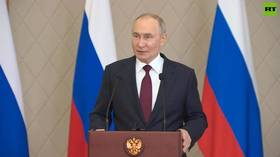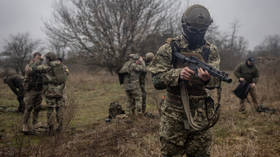Splashdown! Astronauts aboard SpaceX capsule make water landing in the Gulf of Mexico
Two NASA astronauts have landed safely back on Earth after a blistering descent through our planet’s atmosphere in a SpaceX capsule. The historic feat is a milestone for Elon Musk’s spaceflight company.
Astronauts Bob Behnken and Doug Hurley splashed down in the Gulf of Mexico on Sunday afternoon, after a 63-day mission to the International Space Station (ISS). Launching in May, the mission was the first manned spaceflight from American soil in nearly a decade, and the first launch of NASA astronauts by a private company.
Good splashdown of Dragon confirmed! Welcome back to Earth, @AstroBehnken and @Astro_Doug! pic.twitter.com/0vAS3CcK9P
— SpaceX (@SpaceX) August 2, 2020
Behnken and Hurley undocked from the ISS earlier on Saturday and set a course for home. The SpaceX Dragon Endeavour capsule withstood temperatures of 3,500 degrees Fahrenheit (1,926 Celsius) during its descent, along with a risky parachute deployment, before the capsule finally came to a stop in the ocean.
The four main parachutes have deployed. #LaunchAmericapic.twitter.com/Ctu4v7hbMw
— NASA (@NASA) August 2, 2020

The successful landing means that NASA will now review the Dragon Endeavour capsule, along with its Falcon 9 rocket, for human spaceflight. Assuming no technical issues are discovered, the SpaceX craft can enter into regular service as the US agency’s primary means of transport to and from the ISS.
A Falcon 9 rocket has already arrived in Florida in preparation for SpaceX’s next launch, slated for late September. The upcoming mission will see three NASA astronauts and one Japanese crew member journey to the ISS.
Prior to the mission, NASA had relied on Russian Soyuz rockets to reach space since 2011. Instead of blasting off from Florida, the American astronauts would have to travel to the Baikonur Cosmodrome in Kazakhstan. Baikonur was ground zero for the Soviet Union’s first victories in the space race, including the launch of Sputnik 1 – the first artificial satellite – and Vostok 1 – the first human spaceflight.
Like this story? Share it with a friend!












